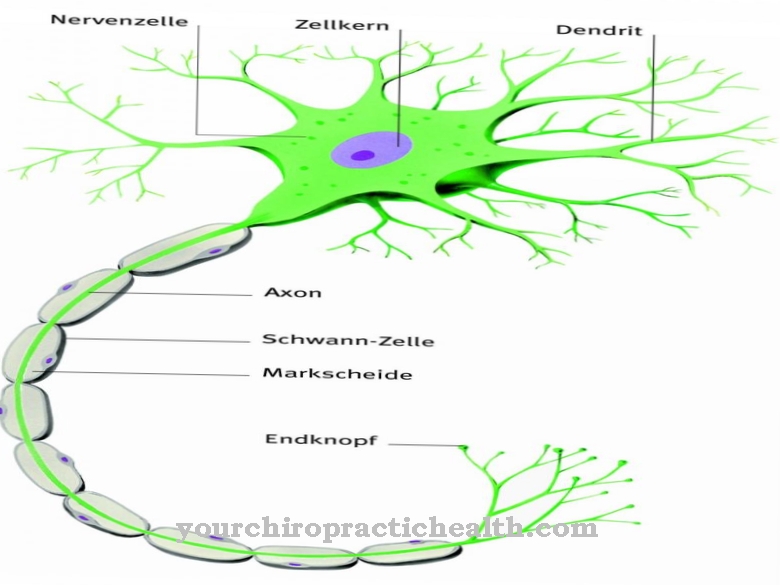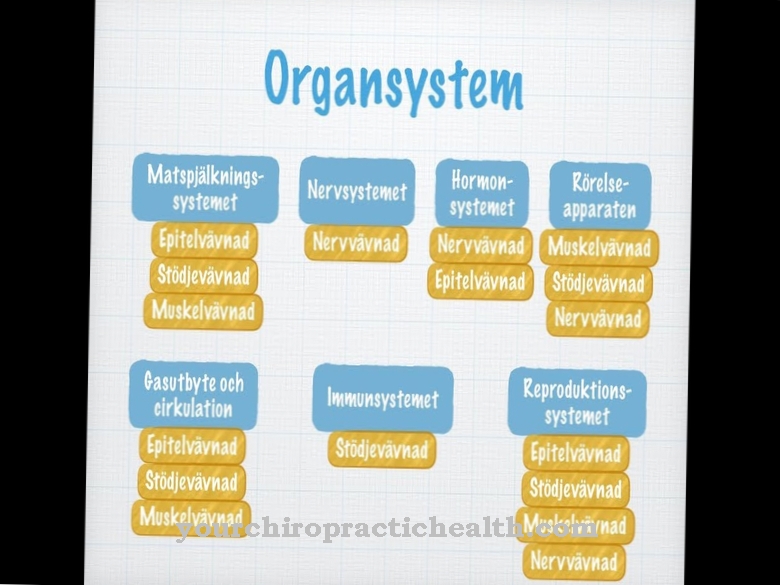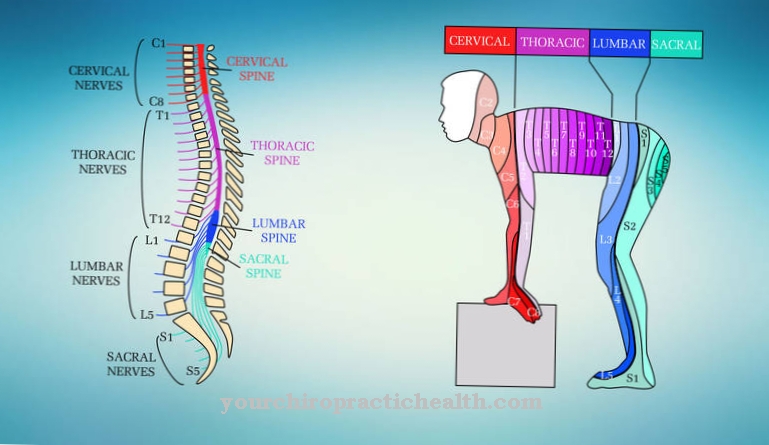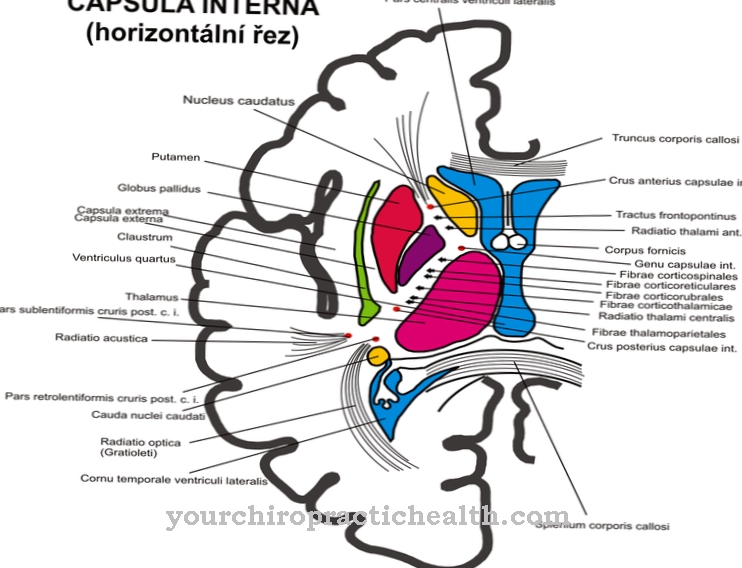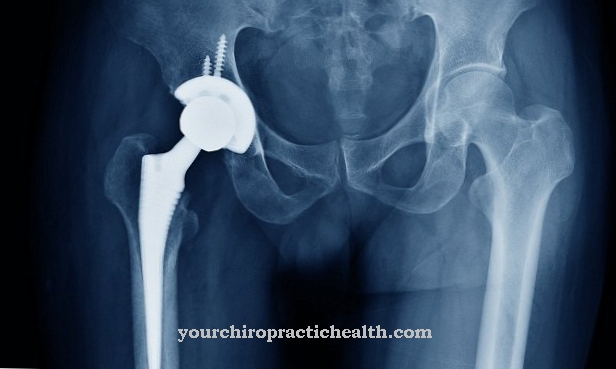As external carotid artery supplies the External carotid artery Thyroid, larynx, pharynx, skull bones, dura mater and soft tissues of the head with blood. Its wall consists of three layers and helps maintain vascular pressure through the activity of sphincters.
What is the external carotid artery?
The external carotid artery is the external carotid artery and one of the larger blood vessels in the human body. They branch off from the common carotid artery (common carotid artery) and in turn branch out into numerous branches. Behind it lies the internal carotid artery or internal carotid artery, through which blood flows to the brain, among other things.
Although the course of the blood vessels follows a certain pattern in all people, individual development can deviate from it. Such deviations do not necessarily represent a malformation or illness; instead, there are variants that do not have to lead to a functional restriction. Some variants are even common: Branches of the external carotid artery that lead to the tongue and through the face (lingual and facial arteries) share a common branch, the linguofacial trunk, in 20% of the population.
Anatomy & structure
Stable but flexible walls surround the external carotid artery and enable it to keep the internal blood pressure constant. The outermost layer (tunica externa or tunica adventitia) contains nerves that are responsible for controlling the artery. In addition, vessels run through them, which distribute nutrients in the tissue of the outer layers.
The structure of the tunica externa is mainly made up of connective tissue. Under this layer lies the tunica media, which contains the muscles of the blood vessel. For the most part, these are ring-shaped muscles that wind around the artery in inclined paths. In addition to the muscle fibers, the tunica media contains elastic and collagen fibers. The tunica intima lines the inner wall of the external carotid artery with its endothelium; The intima also includes a layer of connective tissue that lies over the endothelium, as well as the subendothelial stratum and the internal elastic membrane, which forms the border with the tunica media.
Function & tasks
In its function as an artery, the external carotid artery transports blood away from the heart, and its capacity makes up 20% of the total amount of blood in the human body. To allow blood to flow, the heart pumps the fluid in a steady rhythm, thereby driving it. The blood pressure in the arteries also contributes to this and is a frequently recorded measured value in medicine as arterial vascular pressure.
In order to reach the different areas of its supply area, the external carotid artery divides into different branches. The most important branches are:
- the superior thyroid artery, which supplies blood to the thyroid gland;
- the lingual artery, where blood flows to the tongue;
- the facial artery, which covers the superficial parts of the face;
- the ascending pharyngeal artery, which leads via the side wall of the pharynx to the pharyngeal muscles, tympanic cavity and dura mater;
- the ramus sternocleidomastoideus, which forms the branch that leads to the neck muscle Musculus sternocleidomastoideus;
- the occipital artery, which carries blood to the back of the head;
- the posterior auricular artery, which supplies the middle and inner ear, the auricle and the surrounding soft tissue;
- the superficial temporal artery, which covers the upper part of the head and runs in front of the ear;
- the maxillary artery, which continues the path of the temporal artery and covers the deep parts of the face.
This order corresponds to the order in which the main branches branch off from the external carotid artery. In addition, the individual blood vessels sometimes split even further in order to reach fine tissue structures. Medical students often learn the sequence with the help of a donkey bridge: "Theo Lingen makes fantastically strong oxtail soup from dead mice."
Diseases
The pulse of the external carotid artery can be easily measured in two places. It can be easily felt on the one hand on the facial branch (arteria facialis) on the edge of the lower jaw and on the other hand on the temple. Above all, a strong pulse beat on the temple can be visible through the skin with the naked eye.
Injuries to the face and neck can damage the common carotid artery and its branches. The extent of the consequences depends on the type, location and extent of the lesion. Pain in the common carotid artery or both branches may indicate vascular problems. One condition that can cause pain in the carotid artery is arterial dissection, in which the vessel walls separate from one another. Often blood is responsible for this, which can get between the other layers through a tear in the tunica intima and thereby separate them from one another.
In some cases, as the blood clots, clots that act as a thrombus can obstruct blood flow. Depending on which organ is affected by the restricted blood supply and how severely, strokes, heart attacks and other events can occur and cause permanent damage. However, not all those affected feel pain in the carotid artery, and such pain does not always have to indicate a dissection.
To make matters worse, the pain can radiate into areas other than the place of origin. The carotid stenosis also results in vasoconstriction; it is mostly due to deposits within the artery (arteriosclerosis) and can also lead to stroke and other complications.

